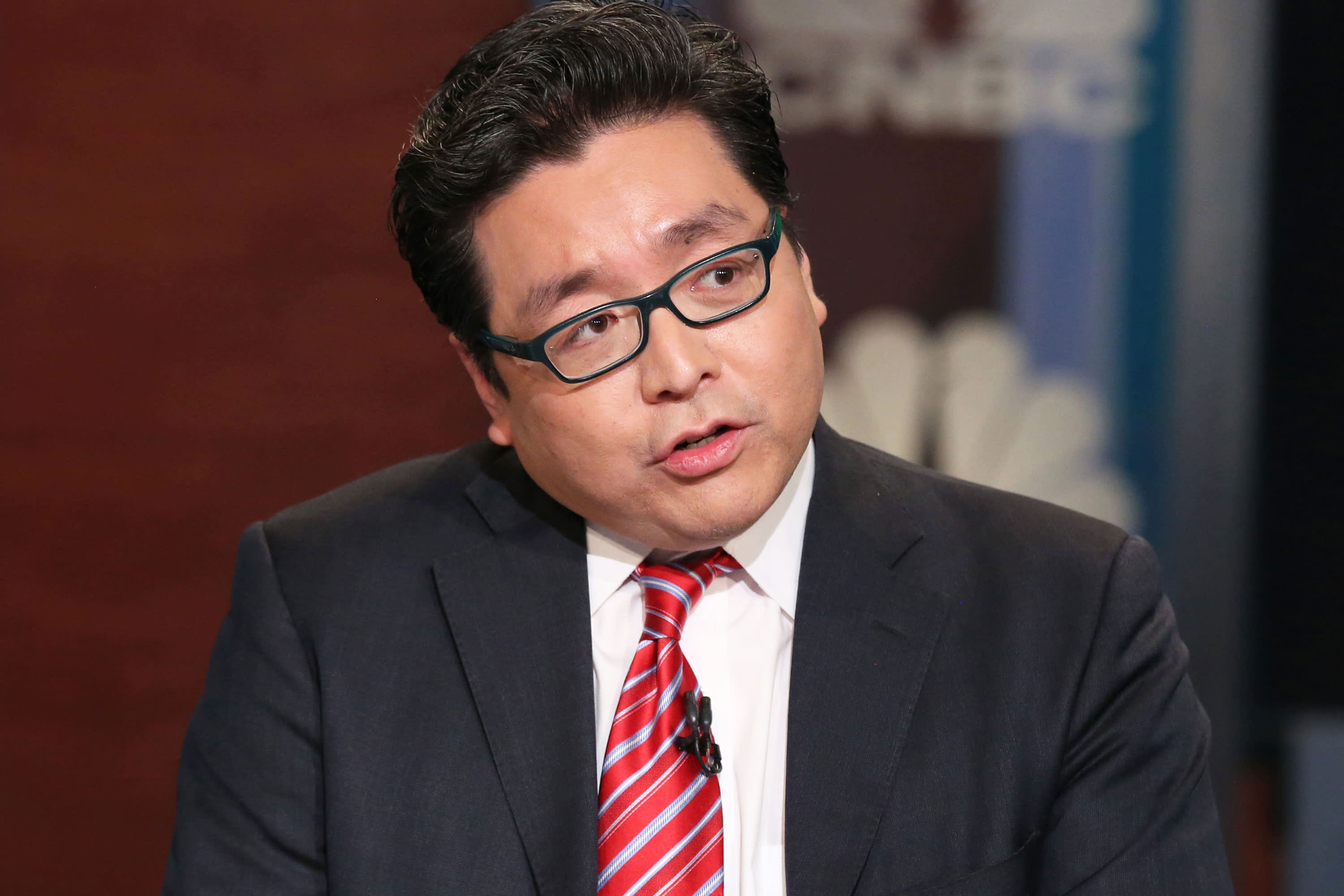
When Tom Lee’s Fundstrat published its first report on bitcoin about five years ago, it said that by 2022, the cryptocurrency could be worth between $15,000 and $50,000.
Bitcoin is currently somewhere in the upper middle of that range, and Lee remains optimistic about the future of bitcoin and crypto, especially in a rising rate environment.
“Interest rates look like they’re set to reverse almost 30 years of declines,” the Fundstrat founder told CNBC’s “Crypto World” Monday. “That means for the next 10 years, you’re guaranteed to lose money owning bonds… that’s almost $60 trillion of the $142 trillion [of U.S. household net worth].”
Technology stocks and other risky growth assets have been stung by spiking rates this year and have continued to fall amid investor anxiety about the Federal Reserve’s planned rate hikes. Goldman Sachs is now predicting seven rate hikes this year.
“The question we ask ourselves is, ‘where’s the $60 trillion going to go to earn yield?'” Lee added. “The obvious thing is it rotates into stocks like FAANG, but I think what is more likely is a lot of speculative capital from equities… it’s really going to be tracing its roots to a rotation out of bonds and it’s going to eventually flow into crypto.”
Crypto as an alternative asset class has grown and diversified beyond bitcoin in the past two years to include decentralized finance, NFTs and stablecoins as well as other altcoins. However, these newer assets still have a lot to prove to gain legitimacy and give investors confidence like they have in bitcoin.
Investors have become so comfortable with bitcoin that they’re no longer just long-time crypto native types holding on for dear life, or “HODLing,” they’re short-term traders too that treat bitcoin like any other risk asset.
While there’s plenty of room to experiment, test, learn and possibly fail when it comes to NFTs, the metaverse and other new use cases in crypto, it’s imperative to maintain the security of the Bitcoin network, Lee said. That could be the asset’s biggest obstacle to $100,000 or higher, he believes.
“The biggest downside for crypto would be a vulnerability exposed in bitcoin, because it’s the most important blockchain and the one with the most value stored on it,” he said.
Crypto has come a long way in the past five years, but it’s still a young asset whose use cases are still being discovered and theses tested.
“Unless someone really has a crystal ball, it’s very difficult to be precise in crypto,” Lee said. “Drawdowns of 40% are really common and bitcoin makes most of its gains in 10 days in any single year. It’s tough to be too precise with crypto. It’s wide lanes.”




